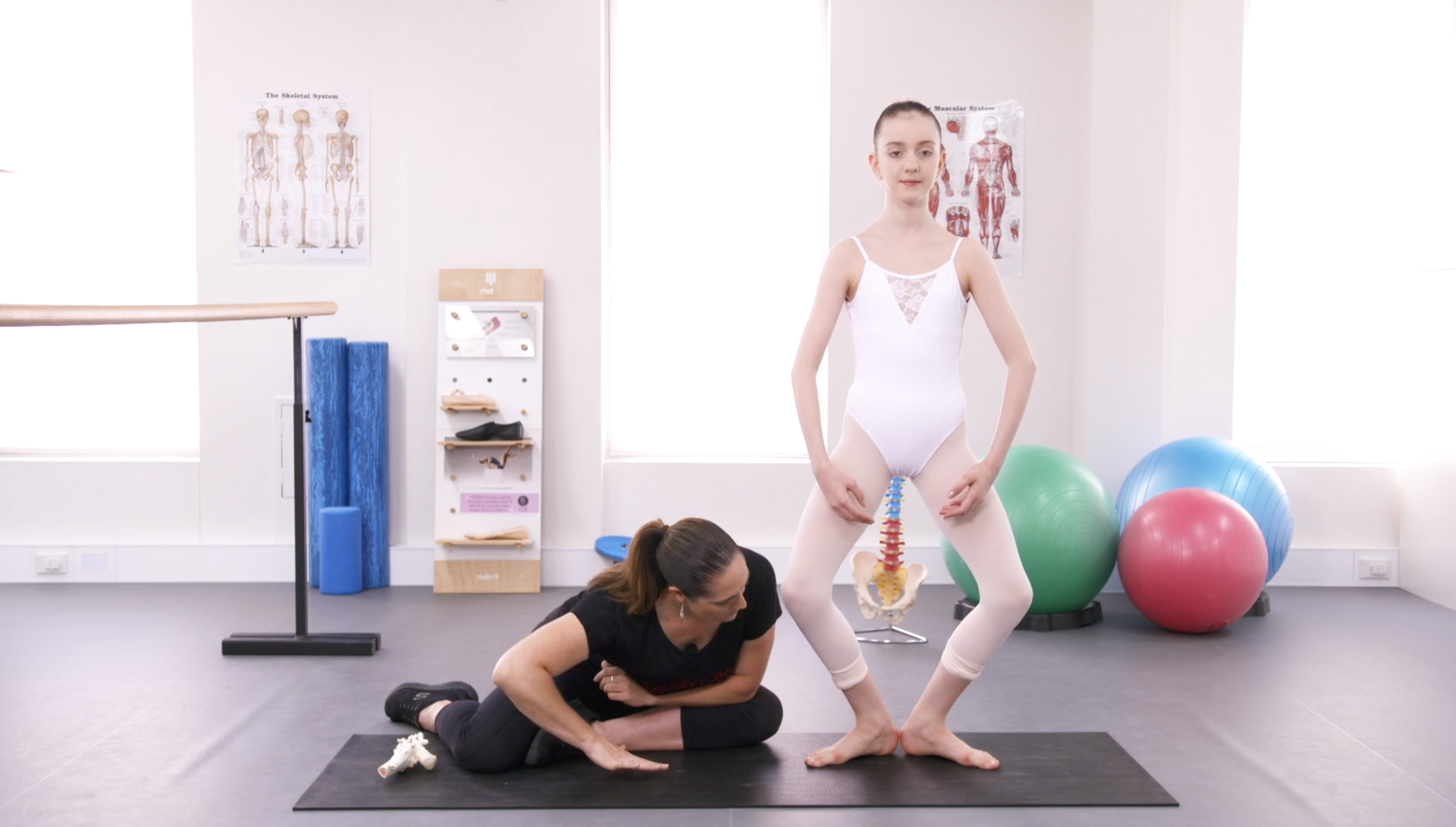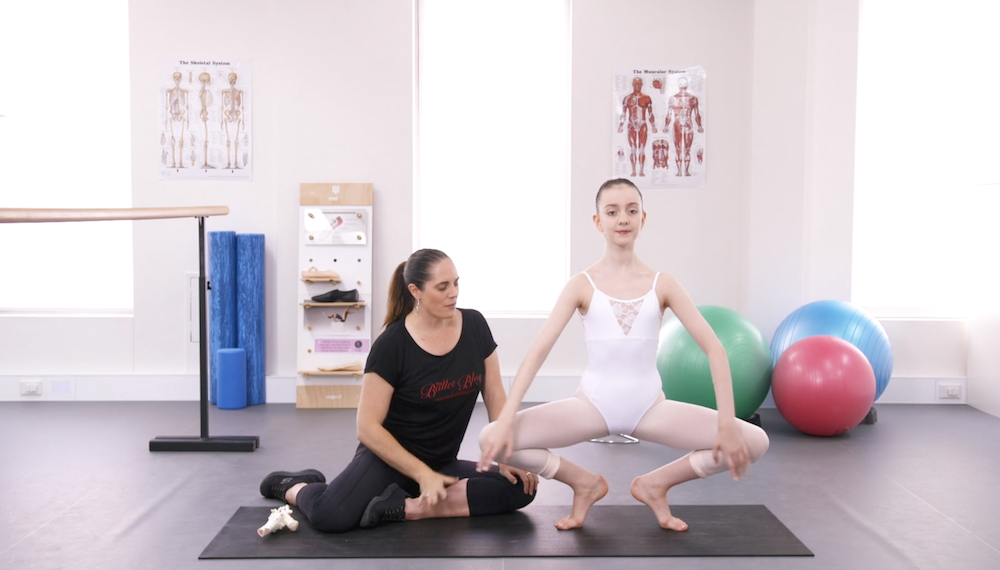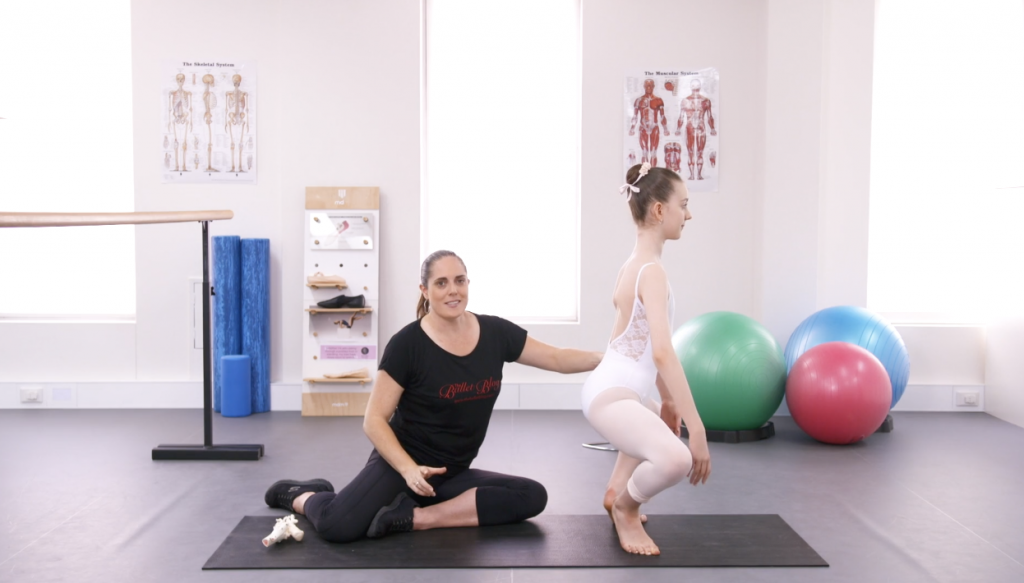Demi Plié and Grand Plié
As well as observing the dynamics of the foot en fondu, a simple demi plié and grand plié often tells us a lot about how a student can control their hips, feet, trunk and legs. Correct execution of a plié is the basis for so many other steps, and correct alignment en fondu will help guard against most knee injuries.
Done
Demi Plié
In any sport, but especially in classical dance, an individual’s movement patterns are formed over years of training. If a simple movement such as a plié is done with care, and constantly revised as the student gains more range and control, this will carry over into all of their other work. If however, these basic movements are not focused on, it will become difficult for the dancer to cope with the more demanding work in the centre. Students do a Demi plié exercise in almost every grade, and because they have been doing them for so long they often do not think very much about the correct performance of this crucial step.
The Ideal Demi Plié:
- Pelvic floor and low abdominals are maintained
- Front of pelvis remains in vertical
- Hips are controlled through maximal range of external rotation, by using the turnout muscles
- Superior Gluteal muscles remain relaxed
- Front of the hip remains soft
- Knees are aligned over toes
- Soft at front of ankles
- Heels remain on the floor
- Arch deforms slightly en fondu (lengthwise) but reforms on return to standing
- Toes remain long and relaxed

Things to avoid:
- Excessive pronation en fondu which will internally rotate the knees
- Sustained pronation when returning to standing
- Forcefully lifting the arches which will prevent the subtle pronation needed for a juicy fondu
- Pulling into the plié with the muscles on the front of the shin
- Anteriorly tilting the pelvis in an attempt to get more range

Grand Plié
A grand plié away from the barre is a challenging exercise for many students, and it often shows more weaknesses than a Demi Plié. Dancers should however be able to do an unsupported Grand Plié in the centre before attempting any Grand Allegro. Many students struggle to control their spine, hips and pelvis at the bottom of the Grand Plié. This results in them ‘sitting’ in the bottom of the plié and then having to use momentum to get back up
The Ideal Grand Plié:
- Front of pelvis remains in vertical
- Hips are controlled through maximal range of external rotation, by using the turnout muscles
- Weight placement is between first and second toes
- Spine remains vertical and in neutral
- Keep the movement smoothly controlled and moving continuously

Things to avoid:
- Weight rocking back not the pinkie toe, or forward into the big toe
- Excessive anterior or posterior tilt of the pelvis
- Tucking the pelvis in an attempt to get more range
- Correcting the placement of the pelvis from the pelvis – look to the weight placement on the feet first
- Sitting at the bottom of the plié or bouncing to get back up

Partner Exercise:
Make sure your partner has removed socks or stockings and is wearing close fitting clothes. Observe them doing a demi plié and grand plié both from the front and the side. Note down any observations on the downloadable assessment sheet or your manual. See if you can correct their technique with one cue, rather than multiple ones.

